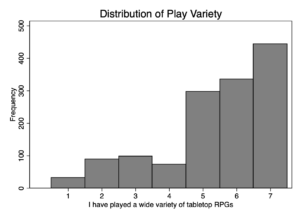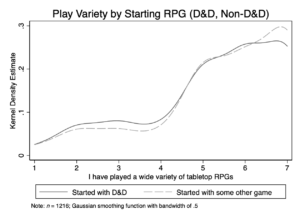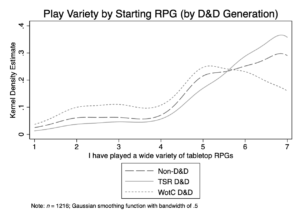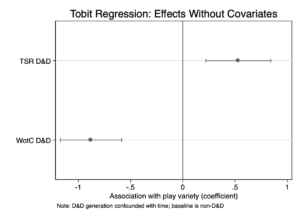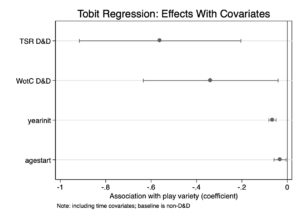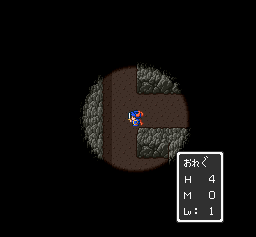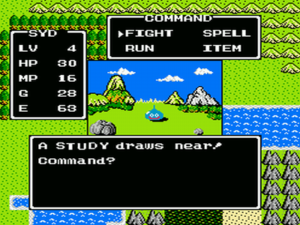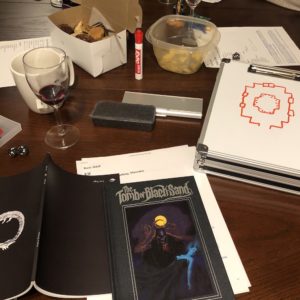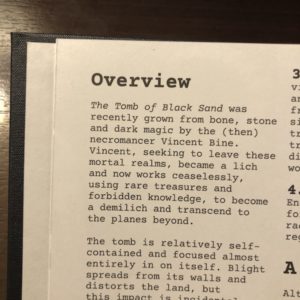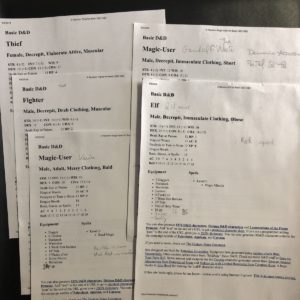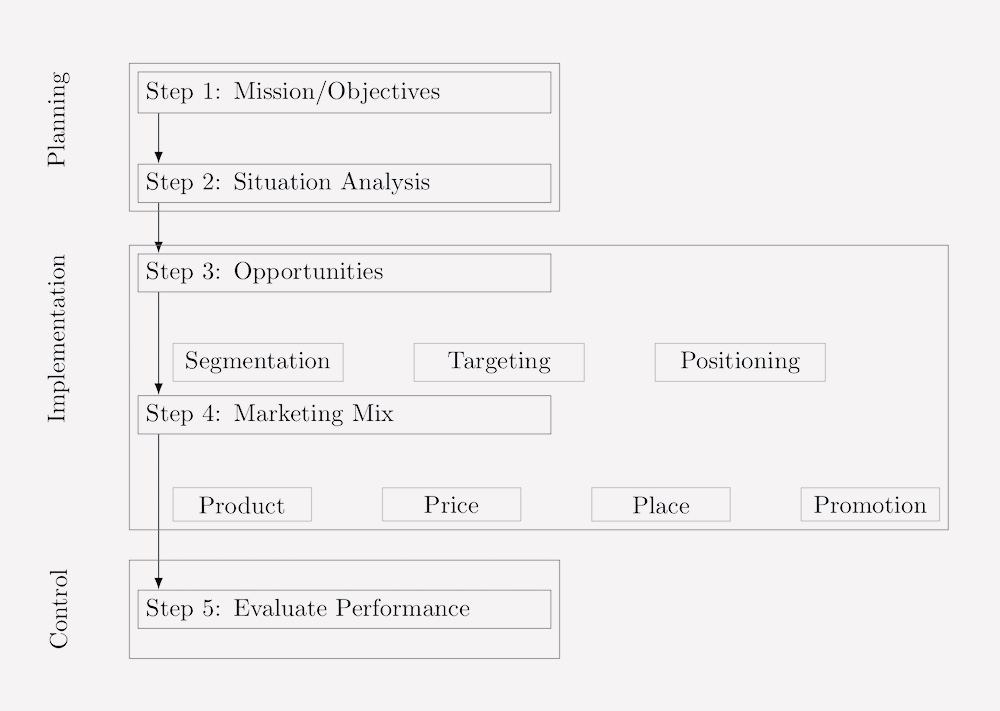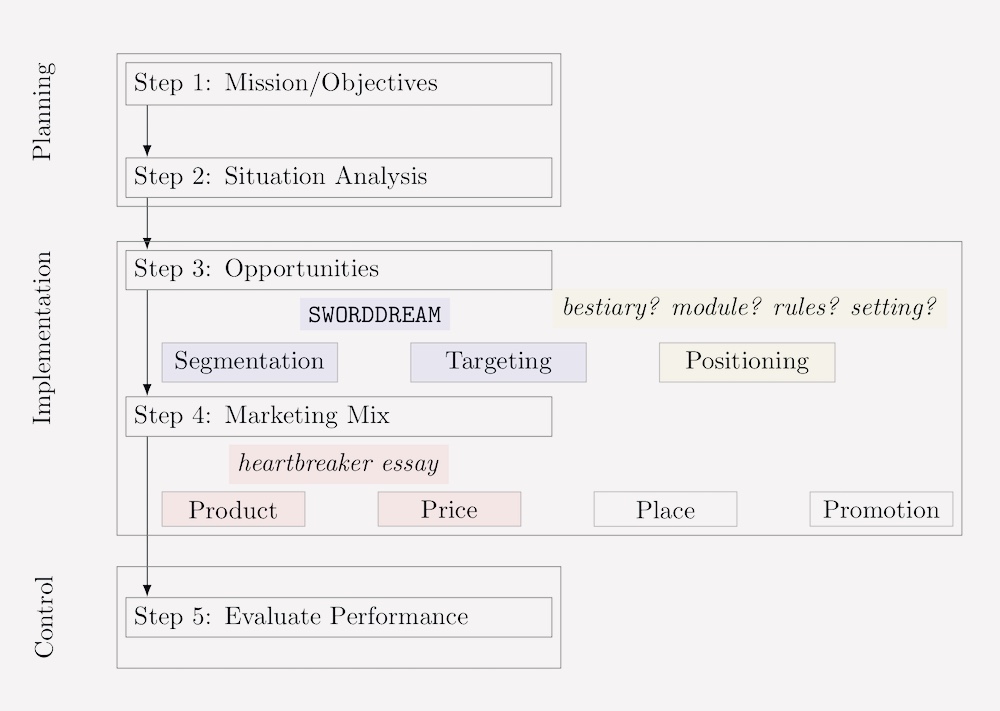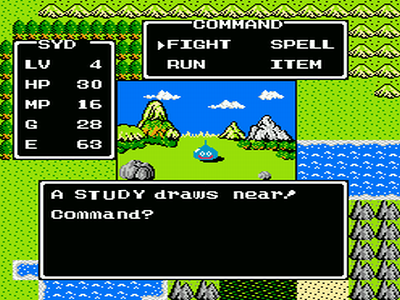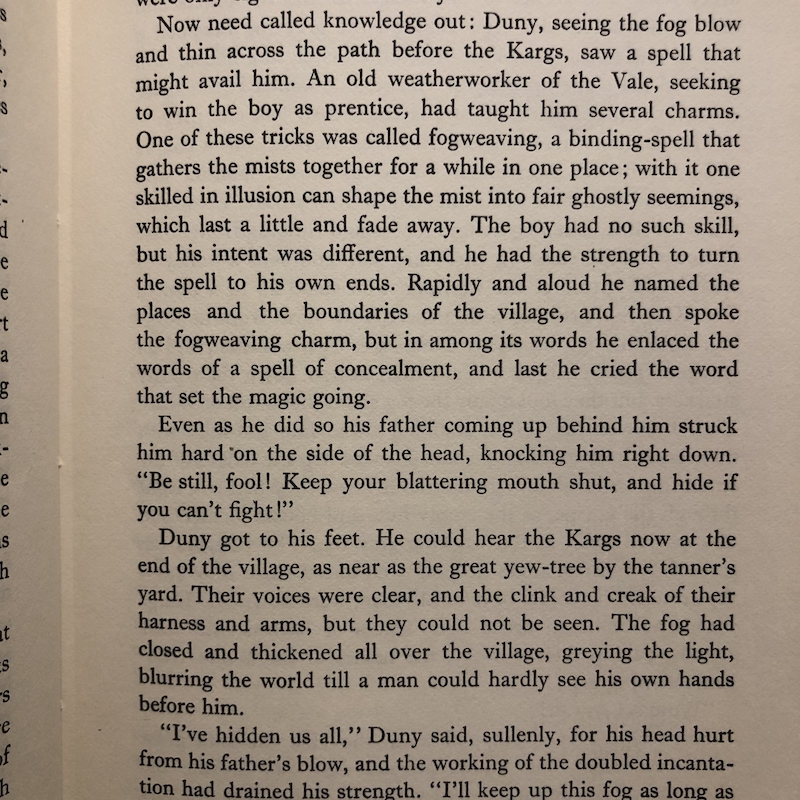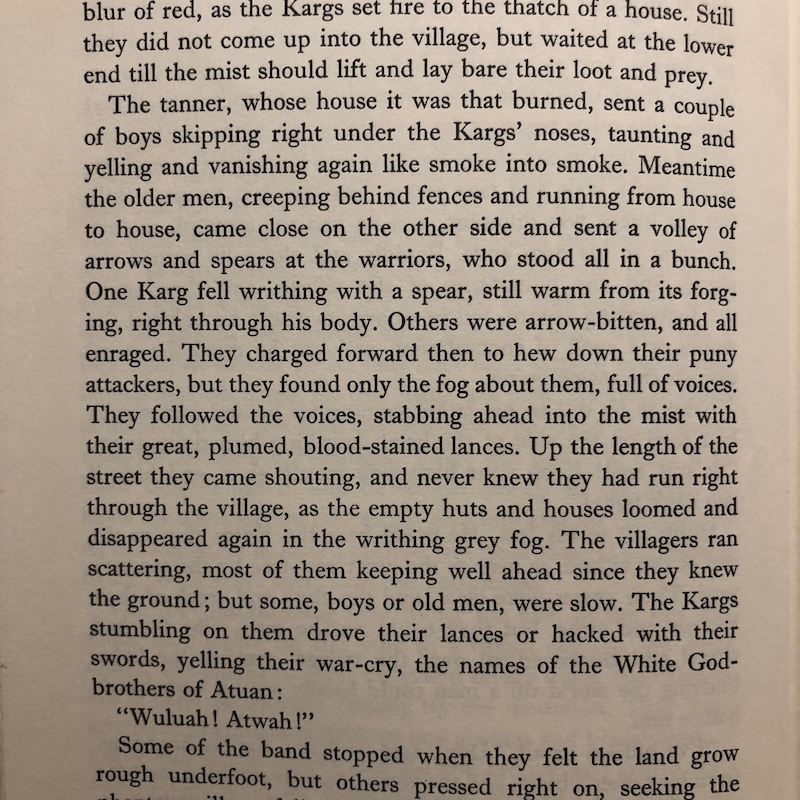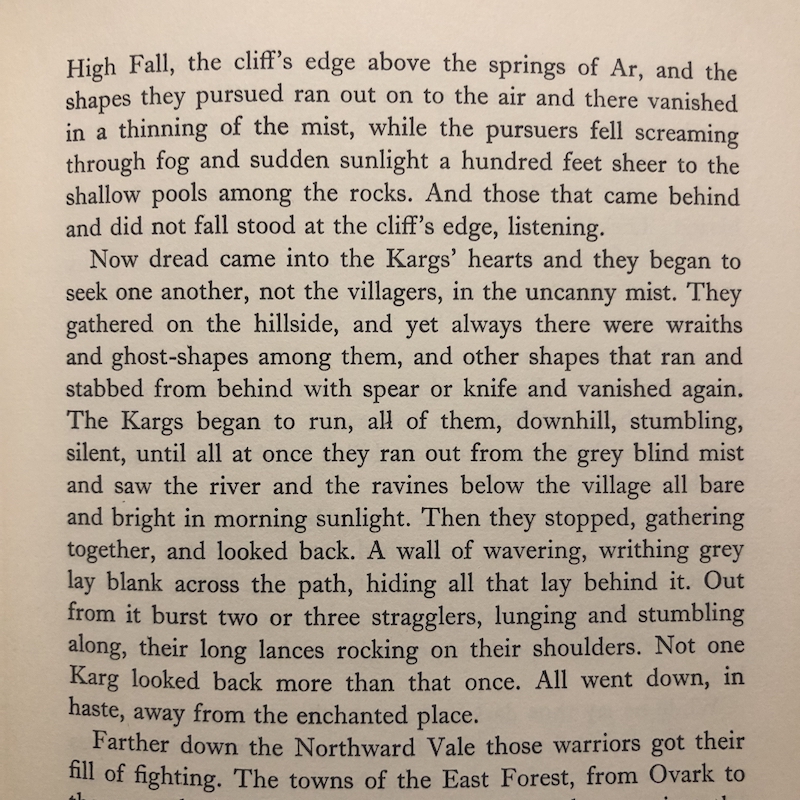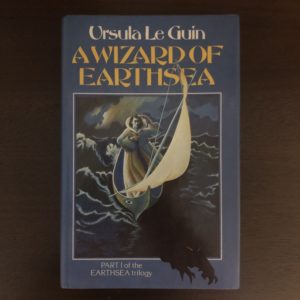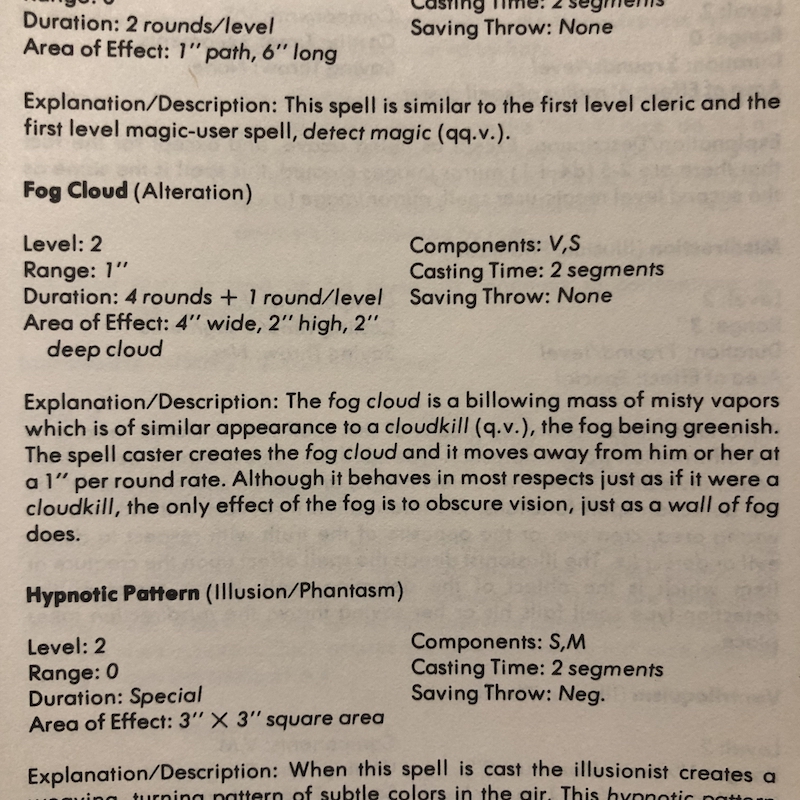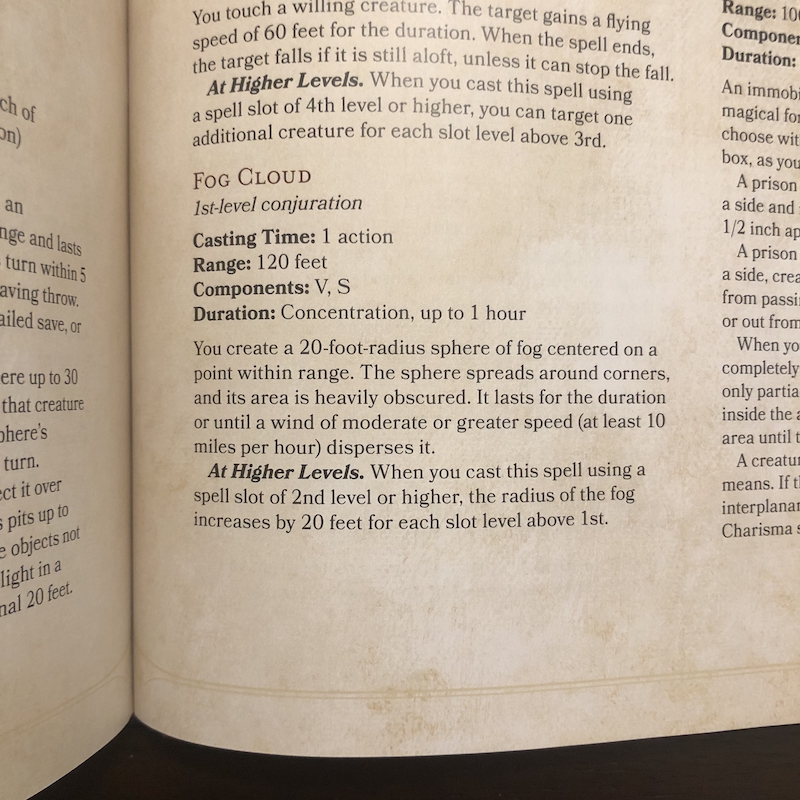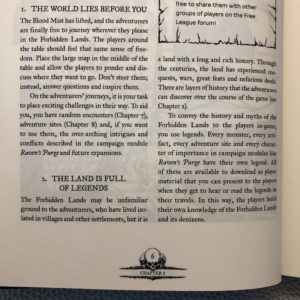Does starting with D&D, compared to starting with other tabletop roleplaying games, lead to playing a wider variety of roleplaying games?
Ben and I ran a survey during the winter to explore attitudes and behaviors related to gateway RPGs (you can find the questions we asked here, along with some descriptive statistics). All of this data is correlational, so interpret any trends below keeping in mind that many unmeasured third variables could provide better explanations. Spoiler alert: after controlling for time-related variables, starting with D&D (compared to non-D&D games) is associated with playing a narrower variety of roleplaying games.
Also, note: I made a programming error in the survey which caused the play variety question to show up for only approximately half the participants. That kind of sucks, but even so the sample is still large (> 1000). The problem was that I based this survey on a previous survey as a template which had used random assignment. The good news is that the presentation seems to have been random. (In any case, you can find a link to the numeric data at the bottom of this post, if you want to perform your own analyses.)
Next, I am going to step through some analysis. The statistics are there if you want them, but I tried to write everything in English as well.
First, here is a histogram showing the distribution of play variety (figure 1). Response labels were 1 = Strongly Disagree up to 7 = Strongly Agree.
Overall, participants reported having played a wide variety of tabletop RPGs (N = 1370, M = 5.41, SD = 1.64), somewhat unsurprising for players with enough engagement to talk about games online. Based on the figure above, it looks like the distribution is censored, probably due to range restriction in the measurement. That is, the question we asked probably has trouble distinguishing between people at the high end of the distribution. Additionally, there may be some self-serving bias where participants overestimate the variety of games played. Some models (such as Tobit regression) can take censored data into account.
What about the focal comparison of starting with D&D compared to starting with a non-D&D game? There is a marginal statistical difference, but the effect is quite small, which is clear if you look at a visualization superimposing the two distributions (figure 2). Using a t-test, the difference between means is 5.44 for non-D&D and 5.28 for any edition of D&D (t(947.326) = 1.67, p = .095). Tobit regression provides similar results for the effect of starting with D&D (b = -.249, SE = .136, t = -1.83, p = .067, 95% CI [-.516, .018]). The following two figures use kernel density estimation, which is (to oversimplify) similar to a histogram, but smoothed. (“Non-D&D” here includes “other” results, which was n around 500. I skimmed the free text response for those participants and there are only a handful which could be considered a D&D variant.)
What if we increase the granularity, distinguishing between TSR D&D and WotC D&D?
These figures (3 and 4) might make it look like there is a clear split between the influence of TSR D&D compared to WotC D&D, however keep in mind that starting edition is confounded with date entering the hobby. WotC D&D came out more recently, so players that first land on WotC D&D tend to have started more recently (mean year = 2011) compared to players that started with TSR D&D (mean year = 1997). Dramatically, players also started much younger with TSR D&D (mean age = 12.37) compared to WotC D&D (mean age = 18.29). Both of these factors would give players starting with TSR D&D more time to explore other games, on average, so we should probably add both as covariates to control for that association.
Indeed, when you control for the age/time related variables, you get an entirely different pattern (see figure 5), where starting with either generation of D&D (TSR or WotC) is associated with less variety playing other tabletop RPGs compared to starting with non-D&D games. Based on this data, I think this is the tentative conclusion. Whether that is a good or bad thing is a value judgment that I will leave to you. This could mean that people are more likely to be satisfied with D&D. It could also mean that people with more variety-seeking personalities are more likely to come across non-D&D games initially, and it is this trait, rather than initial exposure, which is responsible both for the exposure to the initial game and the decision to continue exploring other games. This result concerns individual behavior, not broader cultural influence; it is possible (and seems likely to me, though I lack supporting data) that broad brand awareness of D&D expands the overall player pool and so has a net positive effect on the absolute number of people exploring other games.
The associations according to a Tobit regression including the covariates: TSR D&D (b = -.560, SE = .181, t = -3.09, p = 0.002, 95% CI [-.916, -.204]), WotC D&D (b = -.337, SE = .151, t = -2.23, p = 0.026, 95% CI [-.634, -.041]), year started playing covariate (b = -.066, SE = .008, t = -8.04, p < 0.001, 95% CI [-.082, -.050]), age started playing covariate (b = -.032, SE = .014, t = -2.37, p = 0.018, 95% CI [-.059, -.006]). (This seems to be a decent pass at an appropriate model, but notably the results are similar using standard OLS multiple regression.)
Here is the raw numeric data. Here is the Stata code I used for the analysis in this post. Please let me know if you have any questions, discover anything else, notice any errors, or have any suggestions.

